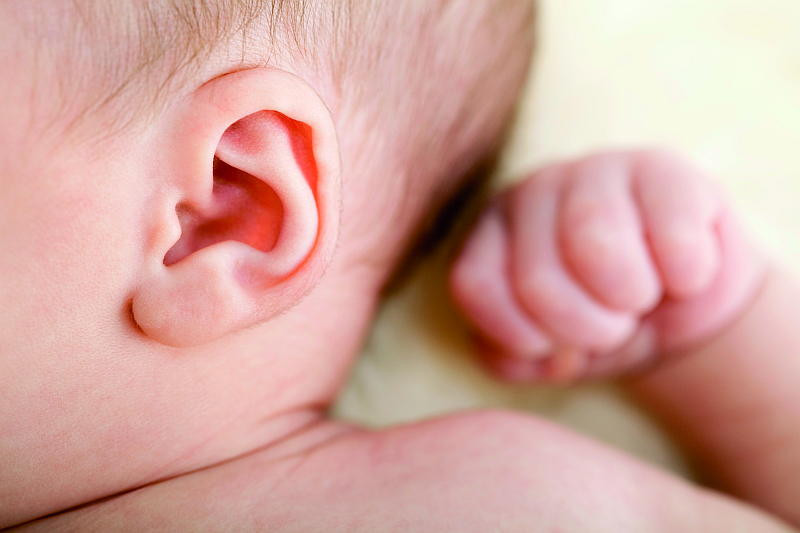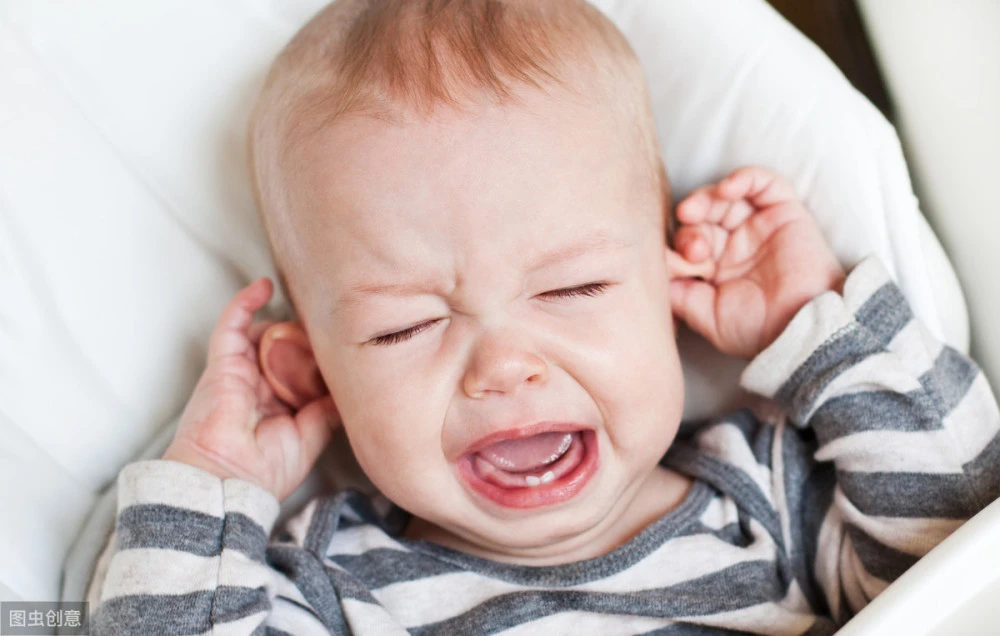Definisi
Tuli campuran adalah kondisi bila tuli konduktif dan tuli sensorineural terjadi bersamaan. Kondisi ini dapat menyebabkan gangguan pendengaran ringan sampai berat.
Telinga terdiri dari tiga bagian, yaitu telinga luar, tengah, dan dalam. Tuli konduktif terjadi ketika suara tidak dapat diteruskan melalui telinga luar dan tengah ke telinga dalam. Tuli konduktif sendiri adalah tuli yang disebabkan karena suara sulit masuk ke telinga dalam. Sementara itu, tuli sensorineural atau disebut juga tuli saraf, terjadi ketika terdapat kerusakan sel rambut pada telinga dalam dan masalah pada sistem saraf pendengaran sehingga suara tidak bisa disampaikan ke otak.
Terkadang, tuli konduktif terjadi bersamaan dengan tuli saraf. Dengan kata lain, pada tuli campuran terdapat kerusakan pada telinga luar dan telinga tengah untuk menghantarkan suara ke telinga dalam, serta kerusakan telinga dalam (koklea atau rumah siput) atau saraf pendengaran.
Penyebab
Semua hal yang dapat menyebabkan tuli konduksi atau tuli saraf dapat menyebabkan tuli campuran. Contohnya adalah seseorang yang memiliki pekerjaan yang melibatkan suara bising dan keras mengalami tuli saraf. Orang tersebut bisa juga mengalami tuli konduktif jika terdapat kotoran telinga yang menyumbat liang telinganya. Selain itu, tuli campuran juga dapat terjadi ketika telinga mengalami cedera. Adanya dua masalah yang muncul bersamaan ini dapat memperburuk pendengaran jika dibandingkan dengan satu kelainan saja.
Penyebab tuli konduktif antara lain:
- Penumpukan cairan di telinga tengah akibat pilek atau alergi.
- Infeksi telinga luar atau tengah. Infeksi telinga luar biasanya disebut swimmer’s ear.
- Kelainan tuba Eustachius. Tuba ini merupakan saluran yang menghubungkan telinga tengah dan hidung. Cairan di telinga tengah dapat mengalir keluar melalui saluran ini. Jika tuba Eustachius tidak berfungsi dengan normal maka cairan akan menumpuk di telinga tengah.
- Kerusakan gendang telinga, misalnya lubang pada gendang telinga.
- Tumor jinak. Tumor ini biasanya bukan kanker namun dapat menyumbat telinga luar atau tengah.
- Kotoran telinga yang menyumbang liang telinga.
- Adanya benda asing yang masuk ke liang telinga. Hal ini biasanya terjadi pada anak-anak, yang sering memasukan benda seperti kerikil, kacang-kacangan, dan manik-manik ke dalam telinganya.
- Kelainan bawaan telinga luar atau tengah, misalnya tidak adanya telinga luar sejak lahir, bentuk liang telinga abnormal, atau kelainan tulang pada teling tengah.
Penyebab tuli sensorineural antara lain:
- Proses penuaan normal (presbikusis).
- Paparan terhadap suara bising yang keras atau ledakan. Biasanya suara bising didapatkan dari tempat kerja dan mendengarkan musik terlalu keras.
- Obat-obatan yang dapat mengganggu pendengaran.
- Genetik atau infeksi kehamilan. Jika seorang anak terlahir dengan tuli saraf, maka kemungkinan besar disebabkan oleh kelainan genetik atau infeksi yang ditularkan dari ibu ke janin, seperti toksoplasma, rubella, atau herpes.
- Cedera kepala.
- Kelainan bawaan telinga dalam.
- Penyebab lain yang lebih jarang, misalnya penyakit jantung, diabetes, infeksi seperti gondongan, penyakit Meniere, dan penyakit autoimun.
Gejala
Gejala tuli campuran dapat terjadi pada satu atau kedua telinga. Gejalanya meliputi campuran gejala tuli konduktif dan tuli sensorineural.
Gejala tuli sensorineural, di antaranya:
- Pembicaraan orang lain terdengar tidak jelas. Anda mungkin merasa bisa mendengar namun tidak bisa mengerti isi pembicaraan.
- Kesulitan mengikuti pembicaraan ketika dua orang atau lebih berbicara bersamaan.
- Bunyi berdenging di telinga yang konsisten.
- Kesulitan mendengar di lingkungan yang berisik (contohnya di stasiun, tempat konstruksi, mall, dan pusat keramaian lainnya).
- Kesulitan mendengar suara bernada tinggi (seringnya suara wanita dan anak-anak).
- Suara yang biasa terdengar lebih keras atau lebih pelan.
- Rasa tidak seimbang atau melayang.
- Sulit mendengar suara pelan.
- Suara keras terdengar seperti teredam atau tidak jelas.
Tuli konduktif biasanya hanya bermasalah pada volume suara, sehingga dengan menaikan volume biasanya suara akan terdengar lebih jelas. Gejala lain yang dapat terjadi pada tuli konduktif, misalnya:
- Lebih mudah mendengar pada satu telinga yang lain.
- Nyeri pada telinga.
- Sensasi penuh pada telinga.
- Sulit dalam percakapan lewat telepon.
- Cairan keluar dari liang telinga.
- Merasa suaranya sendiri lebih keras atau berbeda.
Diagnosis
Diagnosis tuli campuran ditegakkan dengan pemeriksaan telinga, hidung, tenggorokan yang dilakukan oleh dokter spesialis THT. Dokter akan memeriksa apakah terdapat tuli konduktif dan mencari penyebabnya, sehingga dapat memilih terapi yang tepat. Sementara itu, pemeriksaan audiologi dilakukan untuk memeriksa tuli saraf secara mendetail dan untuk menentukan alat bantu dengar yang tepat jika dibutuhkan.
Tata Laksana
Tuli konduksi biasanya dapat diterapi dengan obat-obatan atau operasi, sedangkan tuli sensorineural diatasi dengan penggunaan alat bantu dengar dan biasanya bersifat permanen. Oleh karena itu, terapi untuk tuli campuran biasanya merupakan kombinasi dari obat-obatan atau pembedahan dan penggunaan alat bantu dengar. Pada beberapa kasus, alat bantu dengar implan atau tipe khusus lainnya dibutuhkan ketika seseorang memiliki tuli campuran.
- Penanganan tuli konduktif yaitu dengan obat-obatan, mengeluarkan kotoran telinga yang menyumbat, dan operasi. Pilihan terapi disesuaikan dengan penyebabnya. Para ahli merekomendasikan untuk menangani komponen konduktif terlebih dahulu karena pemakaian alat bantu dengar akan lebih baik jika aspek tuli kondusif sudah tertangani.
- Alat bantu dengar. Alat ini membantu orang dengan gangguan pendengaran untuk mendengar lebih baik dan meningkatkan persepsi terhadap pembicaraan dan suara lain. Namun, alat ini tidak mengembalikan pendengaran menjadi normal. Alat bantu dengar ditempatkan di dalam atau belakang telinga. Banyak penelitian yang menunjukkan bahwa pemakaian alat bantu dengar dapat memperbaiki kualitas hidup. Terdapat beberapa tipe alat bantu dengan dengan beragam fungsi dan fitur untuk memenuhi kebutuhan pendengaran masing-masing individu. Pada umumnya, alat bantu dengar terus berkembang menjadi lebih baik seiring kemajuan ilmu pengetahuan dan teknologi. Alat bantu dengar modern bersifat digitaldan berukuran kecil. Pengembangan alat bantu dengar terjadi sedemikian rupa untuk lebih menyerupai pendengaran manusia yang normal. Alat bantu dengar terbaik untuk Anda adalah yang dapat membantu pendengaran Anda. Berkonsultasilah dengan ahli alat bantu dengar untuk membantu Anda memilih alat bandu yang tepat.
- Implan koklea (rumah siput). Implan ini menghantarkan suara langsung ke otak lewat saraf pendengaran sehingga memungkinkan orang dengan kerusakan sel telinga dalam dan gangguan pendengaran yang berat untuk dapat mendengar. Biasanya terapi ini baru dipakai pada tuli saraf berat yang tidak membaik dengan pemakaian alat bantu dengar. Implan koklea dipasang melalui prosedur pembedahan, biasanya dilakukan dengan bius umum.
Komplikasi
Tuli terbukti mempengaruhi kualitas hidup dan status mental seseorang secara negatif. Seseorang dengan gangguan pendengaran akan mengalami kesulitan memahami orang lain sehingga dapat meningkatkan kecemasan atau menimbulkan depresi.
Pencegahan
Satu-satunya penyebab tuli yang dapat dicegah ialah tuli akibat paparan suara bising. Suara apapun yang melebihi 85 desibel dapat menyebabkan kerusakan sel rambut di telinga dalam yang mengubah suara menjadi sinyal ke otak. Cara yang dapat dilakukan untuk mencegah tuli akibat suara bising:
- Kurangi paparan terhadap suara keras.
- Jangan mendengarkan musik menggunakan headphone atau earbud dengan volume keras.
- Menggunakan sumbat telinga atau pelindung telinga saat beraktivitas dengan suara keras atau di atas 85 desibel.
Kapan Harus ke Dokter?
Jika Anda merasa Anda mungkin memiiki masalah pendengaran, sebaiknya Anda berkonsultasi ke dokter agar dapat dilakukan pemeriksaan pendengaran. Anda juga sebaiknya berkonsultasi ke dokter jika memiliki gejala nyeri telinga, rasa penuh di telinga, berdenging, atau merasakan perubahan pendengaran yang tiba-tiba. Gejala tersebut dapat merupakan tanda dari penurunan pendengaran yang dapat dicegah.
Mau tahu informasi lainnya seputar penyakit telinga? Yuk, cari tahu lebih banyak di sini!
- dr Ayu Munawaroh, MKK
Mixed Hearing Loss. Asha.org. (2022). Retrieved 10 March 2022, from https://www.asha.org/public/hearing/mixed-hearing-loss/.
Mixed Hearing Loss - See causes, definition & treatments - hear-it.org. hear-it.org. (2022). Retrieved 10 March 2022, from https://www.hear-it.org/mixed-hearing-loss.
What is Mixed Hearing Loss? | ReSound. Resound.com. (2022). Retrieved 10 March 2022, from https://www.resound.com/en/hearing-loss/understanding/types/mixed.
Treatment for Mixed Hearing Loss: Know Your Options. WebMD. (2022). Retrieved 11 March 2022, from https://www.webmd.com/connect-to-care/hearing-loss/treatment-for-mixed-hearing-loss.
Types, Causes and Treatments of Hearing Loss - the Basics. Hearing Loss Association of America. (2022). Retrieved 11 March 2022, from https://www.hearingloss.org/hearing-help/hearing-loss-basics/types-causes-and-treatment/.
Chris Iliades, M., & Niya Jones, M. (2022). How to Prevent Hearing Loss - Senior Health Center - Everyday Health. EverydayHealth.com. Retrieved 11 March 2022, from https://www.everydayhealth.com/senior-health/how-to-prevent-hearing-loss.aspx.
Hearing Loss: Causes, Symptoms and Prevention. Healthline. (2022). Retrieved 11 March 2022, from https://www.healthline.com/health/hearing-loss#What-Are-the-Complications-Associated-with-Hearing-Loss?-.












